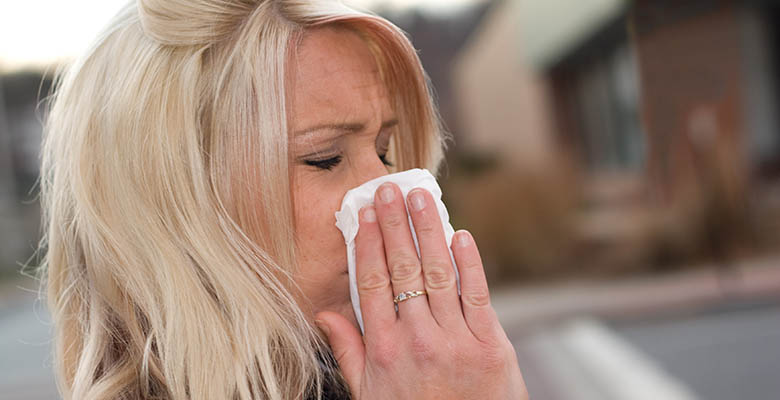What are the noteworthy fall allergy symptoms and how to cure them?

Fall allergy symptoms are the most painful of various seasonal allergies. It is in fact the last blow inflicted by the hay fever on the sufferers of seasonal allergy. Before the winter sets in and the fall begins, pollen allergies affect people rampantly. If you suffer from spring and summer allergy, ragweed or fall allergy will be difficult to handle.
It is seen that the pollen coming from ragweed is far more potent than the pollen emerging from trees. Since the pollen is lightweight, it travels through the wind and moves over to hundreds of miles also. Only a few grains of pollen cause the deadly allergic reaction. If you wish to treat the ragweed allergy symptom, it is crucial to understand the symptoms first. The symptoms are pretty common to cough and cold. You need to know the difference between the symptoms relating to common cold and that of fall allergy to treat them properly.
Some symptoms of fall allergy or ragweed allergy
If you have been affected by ragweed pollen, you will depict the symptoms like runny nose, stuffy nose, itchy eyes, headache, frequent sneezing, skin itchiness and skin irritation. The mentioned symptoms are general ones. There are some more severe symptoms that ragweed allergies show. Apart from the itchy eyes and runny nose, there can be other instances also. If you ignore the most common symptoms of ragweed allergy, there can be more severe symptoms:
- Wheezing
- Difficulty in breathing
- Abdominal pain
- Cramps
- Skin rashes
- Confusion
- Vomiting
- General nausea and feeling of drowsiness and overall weakness.
The above severe symptoms show that you may be perhaps hit by anaphylaxis. The reaction may get life threatening if not attended by a well known allergist. You need to rush to an emergency room as soon as the mentioned symptoms are observed.
Treatment of severe ragweed allergy symptoms
The treatment process of ragweed allergy is just same as common cold. Both the conditions are caused by pollen. The best thing you can do is avoid the outdoors when there is maximum pollen in the air. You should stay indoors when it is peak pollination hours. To avoid an exposure to ragweed pollens, use air purifier to purify the indoor air. In order to avoid the pollen, you should check out the site for hay fever.
Allergy trigger can affect anyone at anytime. You should not confuse ragweed symptoms with that of common cold. They are pretty much different and need different care and treatment in allergy center Darnestown MD.




















